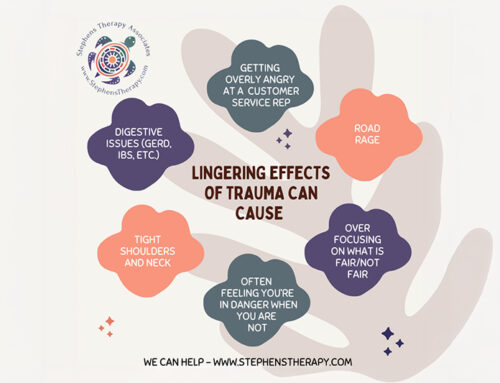The typical cycle of abuse is comprised of tension building, acting-out, reconciliation/honeymoon, followed by a period of calm before the cycle begins again. However, when the abuser is a narcissist, this downward spiral looks different. True to their personality style, the narcissist is compelled to up the ante.
Narcissism changes the back end of the cycle. The narcissist, perpetually self-centered, is unwilling or perhaps incapable of admitting fault. Their need to be superior, correct and/or in charge, limits the possibility of any genuine reconciliation. Instead, it is frequently the abused partner who desperately utilizes apology and appeasement while the narcissist switches into the role of victim. This switchback tactic emboldens the narcissist’s behavior more, further convincing them of their faultlessness. Any threat to their authority repeats the cycle.
Feel Threatened. An upsetting event occurs in which the narcissist feels threatened. It could be the rejection of sex, disapproval at work, embarrassment in a social setting, jealousy of another’s success or feelings of abandonment, neglect, or disrespect. The abused partner, aware of the potential threat, becomes nervous. They know something is about to happen and begin to walk on eggshells around the narcissist. Most narcissists repeatedly get upset over the same underlying issue whether it is real or imagined. They also tend to obsess over any perceived threat.
Abuses Others. The narcissist engages in some sort of abusive behavior which can be physical, mental, verbal, sexual, financial, spiritual or emotional. The abuse is customized to intimidate the abused partner in an area of weakness, especially if that area is one of strength for the narcissist. The abuse can last for a few minutes or as long as several hours.
Becomes the Victim. This is when the switchback occurs. The narcissist uses the abused partner’s reactive behavior as further evidence that they themselves are the ones being abused. The narcissist believes their referential victimization by bringing up past defensive behaviors perpetrated by the abused partner—as if it were the cause of the conflict. Because the abused partner has feelings of remorse and guilt, they accept this warped perception and try to rescue the narcissist. This might include giving in to what the narcissist wants, accepting unnecessary responsibility, placating the narcissist to keep the peace and/or acting as if the narcissist’s lies are the truth.
Feels Empowered. Once the abused partner has given in or up, the narcissist once again feels empowered. This is all the justification the narcissist needs to prove that they were right in the first place. The abused has unknowingly stoked the narcissist’s already fiery ego. But every narcissist has an Achilles heel and the power they have temporarily re-claimed only lasts until the next threat.









